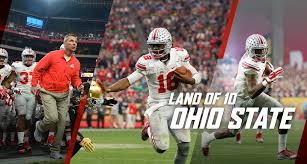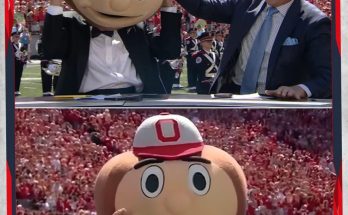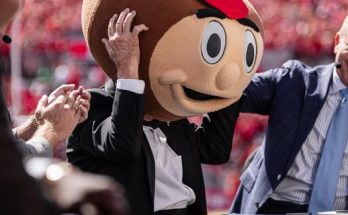The announcement that the only two-time Heisman Trophy winner in college football history would serve as the very first victory bell ringer for a program has created a special kind of buzz that transcends the usual celebratory fanfare of a new season. To understand why this moment resonates so deeply with both the team and the sport at large, one has to appreciate the weight of the Heisman Trophy itself, the rarity of winning it more than once, and the symbolic significance of connecting a living legend to a program’s tradition in such a visible way. This is not just another gameday honor, nor is it a superficial nod to nostalgia. It is a deliberate act of embedding history into the fabric of the present, uniting generations of players, fans, and traditions in one unforgettable gesture.
The Heisman Trophy is not simply a piece of hardware. It is widely considered the most prestigious individual award in college football, given annually to the best player in the nation. Since its creation in 1935, it has been bestowed upon names that went on to become legends both in college and the NFL, or in some cases, simply legends of the college game itself. Yet in nearly a century of awarding it, no player has managed to win the trophy more than once except for one man: Archie Griffin of Ohio State. Griffin’s victories in 1974 and 1975 established him as an icon not only of the Buckeye program but of college football as a whole. To this day, his dual triumph is considered one of the most unbreakable records in sports because it requires a player to dominate not just for one magical season, but to maintain excellence and leadership at a level that convinces voters to once again place him above every other athlete in the nation.
That makes Griffin’s role as the first victory bell ringer profoundly symbolic. The bell-ringing tradition is one that programs across the country often use to connect players, alumni, and fans with the celebration of a win. It is a rallying cry, a moment where victory is given both sound and ceremony, where fans erupt not just at the scoreboard but in unison with a ringing that marks the triumph as permanent and memorable. By choosing Griffin, the program sends a clear message: the bell is not just about marking wins, but about reminding everyone who touches the program what true greatness looks like.
To appreciate how momentous this is, consider how Archie Griffin’s legacy has endured over the decades. In an era of college football where star players often leave after just three years, and where the Heisman race is dominated by quarterbacks with astronomical statistics, Griffin’s accomplishments seem almost mythical. As a running back, he was known for his toughness, consistency, and humility. He rushed for over 1,400 yards in three consecutive seasons, something almost unheard of at the time, and his ability to perform in the biggest moments helped Ohio State remain among the elite of college football in the 1970s. While other Heisman winners often represent fleeting brilliance, Griffin’s story represents sustained excellence.
The decision to have him ring the victory bell first is also about linking past glory with present tradition. Every program has to wrestle with how to honor its history without being trapped by it. The balance between remembering the legends and pushing forward with new goals is delicate. But by placing Griffin in the role of the inaugural bell ringer, the message is not about clinging to the past. It is about using the most indelible part of the past as a foundation for future celebrations. When the bell rings after a win, it will not just echo the sound of triumph—it will carry with it the reminder that greatness is always possible, and that the program has already produced one of the most enduring examples of it.
The Heisman Trophy itself has always been associated with moments of grandeur and storylines that capture the imagination of the public. Every December, college football fans tune in to see which player will become etched into history alongside names like Herschel Walker, Tim Tebow, Barry Sanders, and Charles Woodson. Yet none of those names, as great as they are, can claim what Griffin can. His ability to win the award twice not only places him in a category of his own but also elevates him into a figure that transcends individual fandom. Even those who might root for rival teams recognize the uniqueness of his accomplishment. When fans see him associated with the victory bell, they are reminded not just of Ohio State, but of college football itself at its highest level.
It also cannot be overlooked how powerful the connection between fans and tradition is in college football. Unlike the NFL, which thrives on spectacle and parity, college football thrives on pageantry, ritual, and a sense of belonging that spans decades and generations. From marching bands to fight songs, from rivalry trophies to pregame walks, the traditions are often as significant as the games themselves. The introduction of the victory bell is one such tradition, a chance for fans to unite after the game and cement the memory of each win. By allowing Griffin to be the one who inaugurates it, the tradition is infused from the very start with a sense of reverence and importance that will linger each time the bell is rung in the future.
Beyond tradition and symbolism, there is also a deeply personal aspect to this choice. Archie Griffin is not just remembered as a football player but as a man of integrity and humility. His reputation both on and off the field has always been one of class. For decades, he has served as a mentor and ambassador for Ohio State, embodying the values that programs hope to instill in their athletes. To place him in the role of ringing the bell is not just about his stats or his Heisman Trophies. It is about celebrating the kind of person he has always been and reminding players and fans alike that victory is about more than just the scoreboard. It is about character, resilience, and leadership.
The anticipation around that first ring of the bell will be something special. Fans will not just hear the sound of a new tradition but will feel the weight of history behind it. For younger fans who may have only heard of Griffin through stories or highlight reels, it will be a chance to see him in person, to connect the mythology with reality. For older fans who remember his glory days, it will be a moment of nostalgia and pride, a bridge between their memories and the present moment. For the players themselves, it will serve as a reminder that the program they represent has already produced greatness and that they, too, have the chance to etch their names into the program’s legacy.



